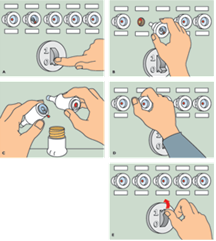Fuses
Fuses and in newer houses, residual-current devices make sure electronic devices work safely. Fuses react to overcharge and they cut out the power. Fuses and the residual-current device are often located in the fuse board that is in the entrance of the apartment. We recommend you to check the condition of the device that is being used when a fuse burns out.
There are two types of fuses. The traditional ceramic fuse and newer automatic fuses that can be restarted by turning the fuse back to on-position. The residual-current can be switch back on likewise. By changing the fuse you can decrease the charge load. Remember: before you change a traditional fuse, turn off the master switch. If the fuse burns out again or the residual-current device switches off again, make a note of fault.

If the switch of the automatic fuse is green or the switch is down the fuse is blown. Snap the blown switch in an upright (connected) position. If the fuse keeps blowing send a Note of Fault.
When a plug fuse is blown, the "dot" in the bottom of the fuse loosens. Before changing the fuses remember to switch off the current. You have to replace the blown fuse with a new one with the same "dot" colour. You can buy these plug fuses from ordinary grocery stores. If the fuse is blowing again check that no faulty appliances are plugged in.

Image: Changing a plug fuse.
